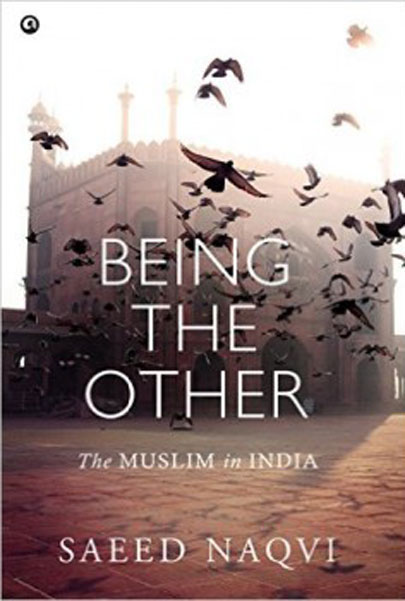This is the sort of book that some Tamil Brahmin might write one day about being a Brahmin in Tamil Nadu, about what it feels like to be an influential minority in a place where the majority is very big indeed and is looking to replace your influence. It is about a lost world where Hindus and Muslims lived together in a reasonably amicable modus vivendi that consisted, in the main, of the practise of live and let live, of benignly ignoring each other, and of not imposing on each other in any way. It was an altogether gentler world that Naqvi poignantly laments in this book, the melting away of a way of life that had more charm and kindness than we are likely to witness in our lifetimes.

Naqvi is a senior Indian journalist who has been covering India since the early 1960s. He writes without obfuscation or pusillanimity. This book is a personal memoir but not entirely. It is about what he has seen; about what he thinks about things; and how he feels about it all. It is not, mercifully, about what has happened to him. It is about what has happened to India after some Muslims, in a fit of short-sightedness, demanded and got a separate country called Pakistan in 1947.
The book has nine rueful chapters that cover a wide range of issues like growing up in the Awadh area, partition, Kashmir, Babri Masjid, the Meenkashipuram riots, and the mangoes of Mustafabad, where the family had a home with a mango tree or two. The underlying message in the book is that it is not very nice to be a Muslim in India because of the overarching belief system that prevails about India being a Hindu country where Muslims live as guests.
Writing about the Partition, Naqvi quietly drops a huge bomb on the Congress with understated fury. He says its secularism was only skin deep and that it didn’t really care about the
90 million Muslims who lived in India in 1947. Gandhiji, Nehru, Sardar Patel — none of them did, he says. He even suggests that the Congress was essentially a Hindu party which wanted to replace the British after they left and that Hindutva, the BJP’s credo, was bequeathed by that old Congress of the 1940s and 1950s.
He endorses the points made by historians who say that the partition was not Jinnah’s doing, but that of the Congress, which was in a hurry to rule as its leaders were all growing old. The evidence he adduces in support of his beliefs is factual, if perhaps selective.
He is equally scathing about Kashmir and India’s policy towards it. He believes that as a princely State with a Muslim majority, under the principle agreed upon for partitioning India, Kashmir should have gone to Pakistan. After all, it was on this principle that India took over Junagadh, whose ruler, in spite of a Hindu majority population in his State, had opted for Pakistan. India accepted the Kashmir ruler’s offer to merge with India, says Naqvi, because Nehru, as a Kashmiri, had a soft corner for Kashmir. He reminds us of how 200,000 Muslims in Jammu were massacred and chased away so that it became a Hindu majority part of J&K. Once again, the evidence is factual, but possibly not complete.
One does not have to agree with everything that Naqvi says. But one must read this book to get an entirely different perspective on modern India, one that is completely at variance with the State-sponsored wisdom we are fed on a whole range of issues.





